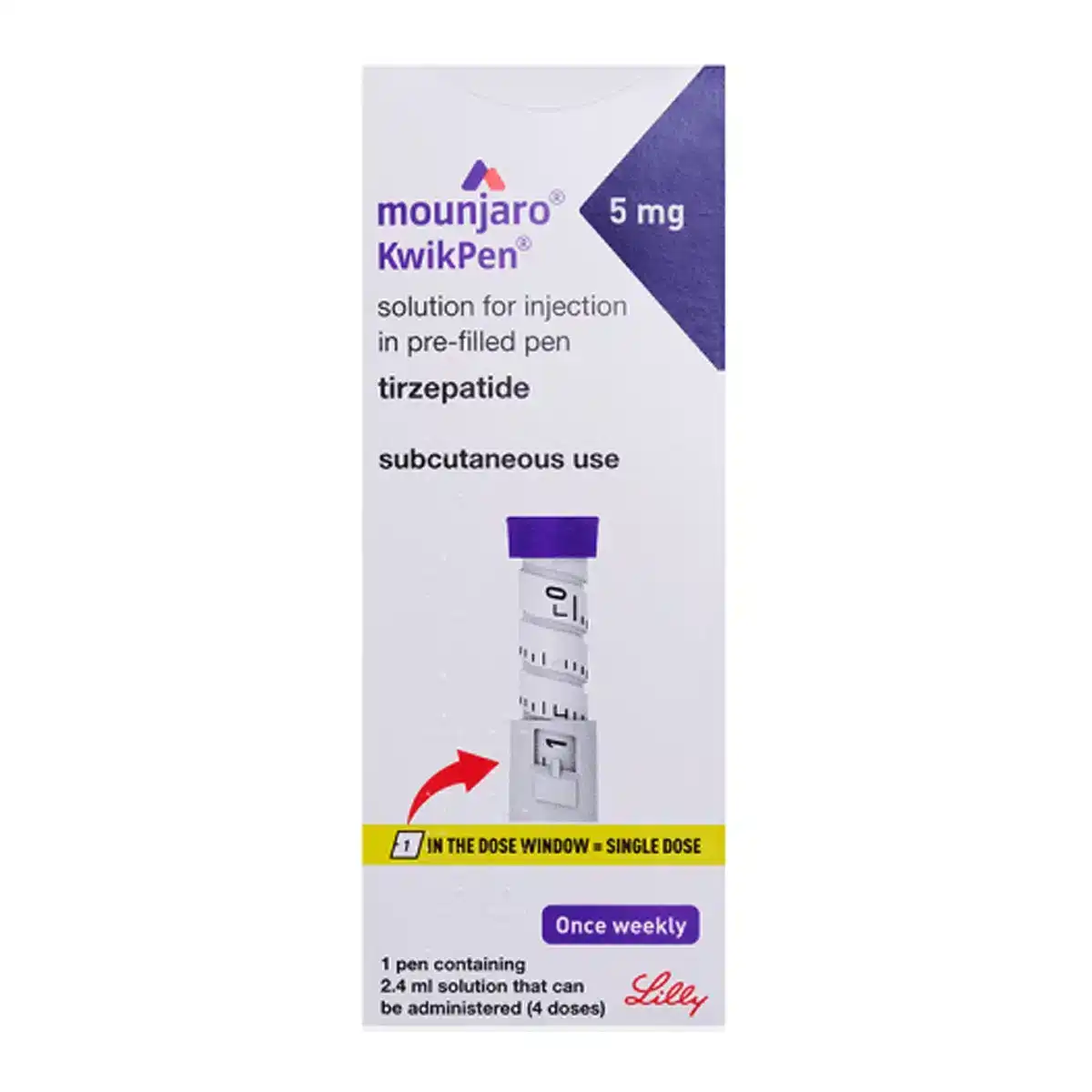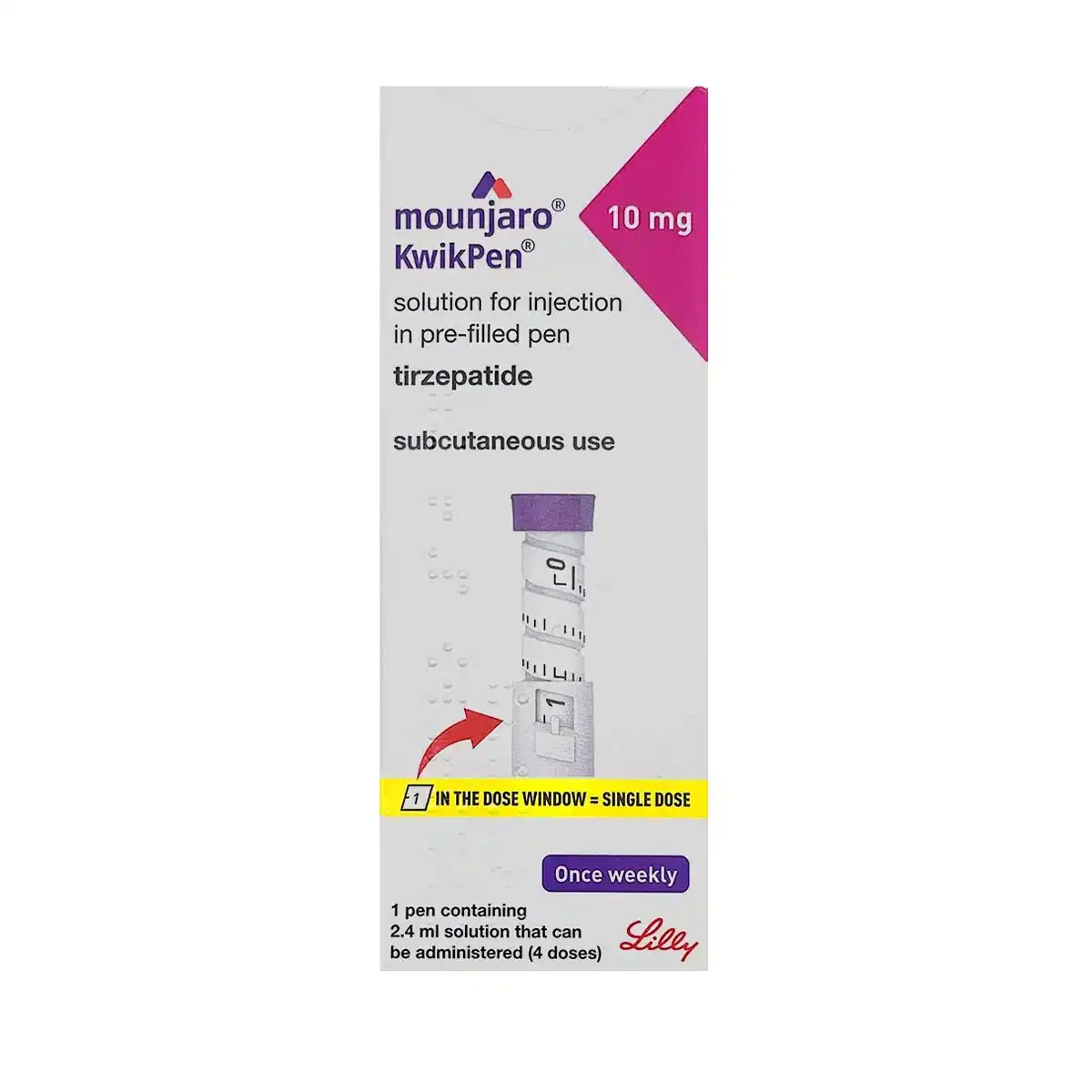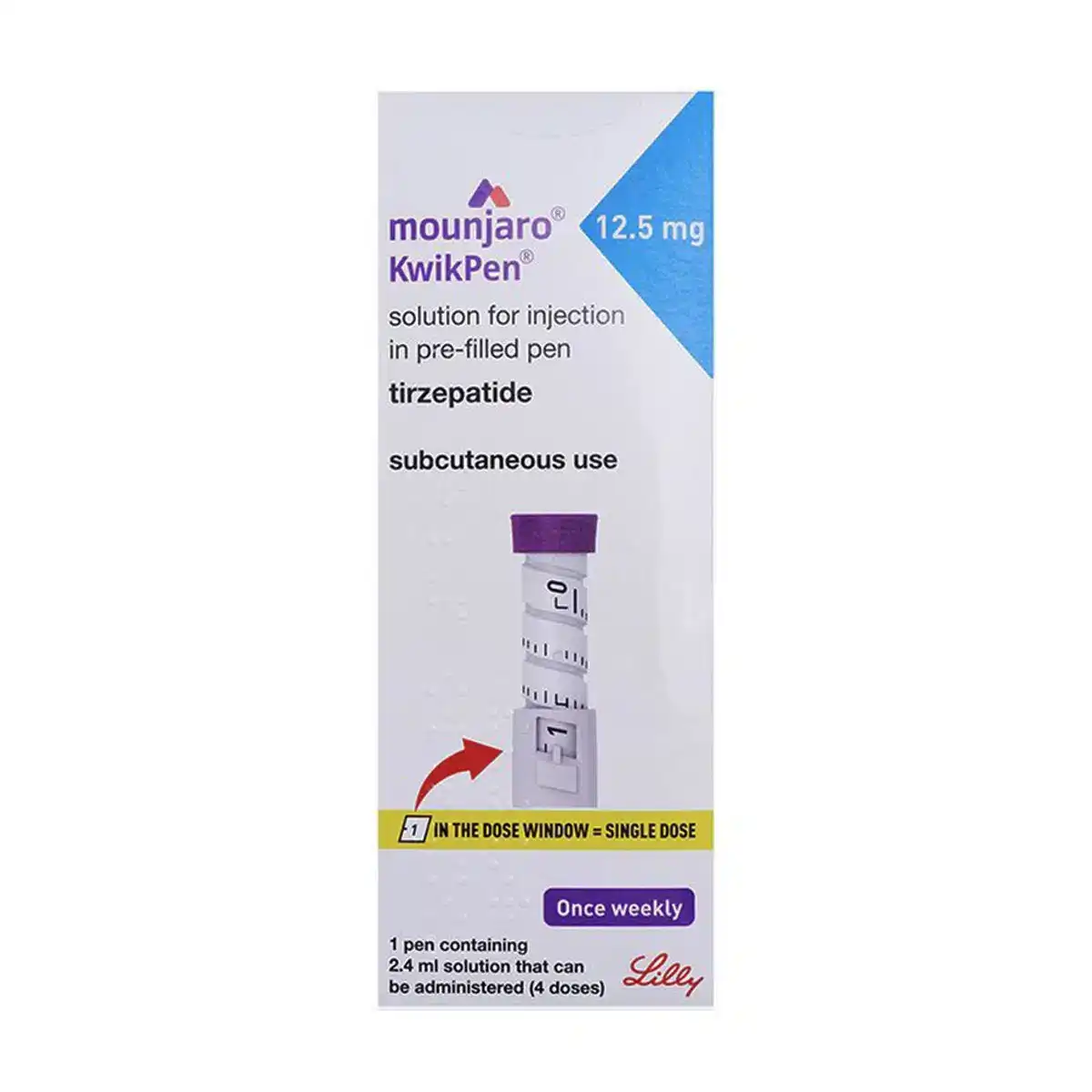Only for Licensed Professionals
Only for Licensed Professionals
.webp)
Mounjaro or Ozempic – Which Is Right For You?
Nina Petrovic
Last Updated On: October 20, 2025
In recent years, medications that target hormones involved in blood sugar control and appetite regulation have transformed the way clinicians approach weight management and type 2 diabetes. Clinical research shows that people using these treatments can achieve substantial and lasting results—around 15% average weight loss with semaglutide (Ozempic/Wegovy) over 72 weeks, and even greater reductions with tirzepatide (Mounjaro/Zepbound).
Both Mounjaro and Ozempic are once-weekly injectable medications designed to help the body manage insulin, glucose levels, and hunger cues more effectively. While they share similar goals, they differ in how they work and who might benefit most from each.
In this article, we’ll take a closer look at how Mounjaro and Ozempic compare. We will explore their mechanisms, benefits, side effects, and clinical uses to help patients and healthcare providers make informed decisions about which treatment may be the better fit.
Key Takeaways
- Mounjaro (tirzepatide) activates both GIP and GLP-1 receptors, while Ozempic (semaglutide) targets only GLP-1, creating key differences in their effects on metabolism and appetite.
- Ozempic is FDA-approved for type 2 diabetes, while Wegovy, its higher-dose version, is approved for chronic weight management.
- Mounjaro is approved for type 2 diabetes, and its counterpart Zepbound is FDA-approved for obesity treatment.
- In clinical trials, Mounjaro showed greater average A1C and weight reductions than Ozempic, though both are effective and safe when used correctly.
- The best choice should align with individual health goals, side-effect tolerance, access, and medical guidance. It does not depend on efficacy alone.
About: Operating since 2016, Med Supply Solutions is known for being one of the industry’s top and trusted suppliers of cosmetic and viscosupplementation products. If you’re looking to buy Mounjaro online, contact our sales department for more information.
Tier pricing
Save 12.02%
4 or more
$439.00 each
Save 14.03%
11 or more
$429.00 each
Save 16.03%
21 or more
$419.00 each
Tier pricing
Save 2%
6 or more
$489.00 each
Save 3.01%
11 or more
$484.00 each
Save 4.01%
21 or more
$479.00 each
Tier pricing
Save 1.67%
6 or more
$589.00 each
Save 2.5%
11 or more
$584.00 each
Save 3.34%
21 or more
$579.00 each
Understanding How Mounjaro and Ozempic Differ in Mechanism

The key distinction between Mounjaro and Ozempic lies in how they act on the body’s hormonal pathways.
Ozempic (semaglutide) is an FDA-approved medication for type 2 diabetes that helps improve blood sugar control and reduce cardiovascular risk. It works by mimicking the hormone GLP-1 (glucagon-like peptide-1), which stimulates insulin release, slows digestion, and reduces appetite. While Ozempic often leads to weight loss, its higher-dose counterpart Wegovy is specifically approved for chronic weight management.
In contrast, Mounjaro (tirzepatide), which is also approved for type 2 diabetes, acts through a dual mechanism as a GIP and GLP-1 receptor agonist. The same active ingredient is available as Zepbound, an FDA-approved formulation for obesity treatment. This dual action enhances insulin secretion, suppresses glucagon, and supports better fat metabolism. Over time, the initial slowing of gastric emptying tends to diminish, but the benefits of appetite regulation and satiety remain strong.
By targeting two complementary hormone pathways, Mounjaro often provides broader metabolic improvements than single-receptor agents like semaglutide. However, Ozempic’s long-standing clinical record makes it a trusted option for patients who prefer an established GLP-1 therapy with proven cardiovascular outcomes.
Clinical Data Comparing Mounjaro vs Ozempic Outcomes
Clinical research comparing tirzepatide (Mounjaro) and semaglutide (Ozempic) continues to define how each performs in real-world settings. In the landmark SURPASS-2 trial, all doses of Mounjaro showed greater A1C and body-weight reductions compared to semaglutide 1 mg (Ozempic). These results confirm Mounjaro’s enhanced impact on blood sugar regulation and weight loss in patients with type 2 diabetes.
In dedicated SURMOUNT weight management trials, higher tirzepatide doses (10 mg–15 mg) achieved an average body weight loss of around 20% over 72 weeks. By contrast, semaglutide’s weight-loss data, which is primarily from Wegovy trials, shows reductions averaging about 15% at the highest approved dose. These findings highlight tirzepatide’s added benefits through dual GIP and GLP-1 receptor activation, though direct comparisons should consider differences in trial design and study populations.
While Mounjaro often leads to faster and more pronounced results, Ozempic remains a top choice for its predictable safety profile and long-term cardiovascular evidence. The decision between the two depends on individual health needs, response to prior treatments, and clinical supervision.
Shared Side Effects and Safety Profiles of Mounjaro and Ozempic
Because Mounjaro and Ozempic act on similar pathways, they share many of the same side effects. Most of these reactions are mild and improve as the body adjusts. Both medications slow digestion, so gastrointestinal symptoms are the most common during early treatment or dose escalation.
Common and Manageable Side Effects
- Nausea and vomiting: These often occur when the stomach empties more slowly. Eating smaller, lighter meals and avoiding greasy foods can help reduce discomfort.
- Diarrhea or constipation: These result from changes in gut motility. Staying hydrated and increasing fiber intake can improve bowel regularity.
- Bloating and indigestion: These symptoms are common early on and may lessen by avoiding heavy, oily foods or overeating.
- Fatigue or mild dizziness: Usually temporary and related to low food intake or dehydration; staying hydrated helps alleviate these effects.
To minimize side effects, patients are encouraged to follow a structured, balanced eating plan that complements incretin-based therapy. Avoiding fried foods, rich desserts, and sugary beverages, as well as other foods to avoid when on Mounjaro, can improve comfort, help maintain consistent blood sugar levels, and support long-term adherence.
Although serious adverse events are rare, they can include pancreatitis, gallbladder inflammation, or thyroid-related risks. Both medications carry similar warnings for individuals with a personal or family history of medullary thyroid carcinoma or MEN 2 syndrome. Regular monitoring and prompt reporting of unusual symptoms help ensure safe and effective ongoing use.
How Patient Needs Determine Mounjaro or Ozempic Selection

Choosing between Mounjaro and Ozempic involves more than comparing clinical outcomes—it requires a personalized approach. Patients focused on maximizing weight reduction may lean toward Mounjaro’s dual-receptor action. At the same time, those seeking a long-established, single-pathway therapy might prefer Ozempic for its reliability and extensive cardiovascular data.
Access and affordability also play essential roles. Because Ozempic has been on the market longer, it’s typically more widely available and covered by insurance. In contrast, newer agents like Mounjaro or Zepbound may have variable coverage depending on the plan.
Ultimately, both therapies offer strong and sustained improvements in glycemic control and metabolic health when used under medical supervision. Regular follow-ups allow clinicians to adjust doses, manage side effects, and evaluate progress over time—ensuring treatment aligns with each patient’s long-term health goals.
Conclusion
When comparing Mounjaro vs Ozempic for type 2 diabetes, both medications deliver impressive results in improving blood sugar control and supporting weight loss.
Mounjaro (tirzepatide) and its weight-management counterpart Zepbound offer the advantage of dual GIP/GLP-1 activity, which can lead to greater metabolic improvements. Ozempic (semaglutide) and its obesity-specific version Wegovy provide a proven, well-researched option with long-term cardiovascular safety data.
The best choice depends on a patient’s medical history, treatment goals, side-effect tolerance, and access to therapy. Working closely with a healthcare provider ensures the safest and most effective plan—combining the right medication with ongoing lifestyle support for lasting metabolic health.
FAQs
1. What’s the main difference between Mounjaro and Ozempic?
Mounjaro (tirzepatide) targets both GIP and GLP-1 receptors, while Ozempic (semaglutide) acts only on GLP-1 receptors. This dual action gives Mounjaro broader metabolic effects.
2. Is Mounjaro more effective than Ozempic for weight loss?
Studies show Mounjaro often leads to greater weight loss than Ozempic. For obesity treatment, the approved versions are Zepbound (tirzepatide) and Wegovy (semaglutide).
3. Can I switch from Ozempic to Mounjaro?
Yes, but only under medical supervision. Your doctor will guide dose adjustments and monitor for side effects.
4. Which medication is better for long-term diabetes control?
Both improve blood sugar and heart health. Mounjaro may lower A1C more, while Ozempic has longer cardiovascular data. The best option depends on your goals and medical history.
References
Wilding JPH, Batterham RL, Calanna S, et al. Once-Weekly Semaglutide in Adults with Overweight or Obesity. N Engl J Med. 2021;384(11):989-1002. doi:10.1056/NEJMoa2032183
Frías JP, Davies MJ, Rosenstock J, et al. Tirzepatide versus Semaglutide Once Weekly in Patients with Type 2 Diabetes. N Engl J Med. 2021;385(6):503-515. doi:10.1056/NEJMoa2107519
Products
Cart
Log In
Newsletter
Subscribe for exclusive offers and updates on new arrivals
Share feedback at:
Working Hours
MON - SUN 9AM to 6PM EST
The Most Popular Brands
Med Supply Solutions
Support
Secure checkout is guaranteed with full adherence to PCI DSS payment standards.
Products listed here are guaranteed authentic and manufacturer-sourced.
Pay easily with trusted providers


*Google and Apple Pay are currently only available via a direct link provided by your account manager.
Copyright 2025. Med Supply Solutions


